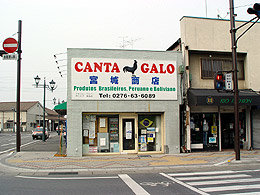I’ve written about conformity in one form or another a lot recently. The word isn’t one that Americans probably have a very good impression of, although if you stop and think about it, society functions only because all of us are conforming in one way or another — for example, I’m wearing pants right now, as you probably are, too. Still, I know that the Japanese carry the concept of “harmony” and working together farther than most countries might. I had a British friend who went back to the U.K. because he couldn’t stand the image of his son wearing a yellow hat and walking in a line with other kindergarten kids, looking like little ducklings following behind the mother duck. When Japanese seem to rebel against society at large by dressing up in outrageous “goth-loli” costumes in Harajuku on Sundays or driving motorcycles modified to be extra-loud through the city, in a way they’re just jumping from one group to another, conforming in a non-standard way, but conforming nevertheless. Back in the early 1980s when anime was a really “underground” thing to be into, my friends and I fancied ourselves quite the rebels, too. Living in a country like Japan is great because it makes you reflect on your own society, too, and cause you to wonder what is truly original, and what is inspired by outside influences?
“You’ve been in Japan too long if you have, at any time, been engrossed in an ‘easy reader’ novel or other work intended for ESL learners.” English is a difficult language, of course, with thousands upon thousands of vocabulary words for students to muck through. To help them out, there are “reduced vocabulary” books published which have a lower level of vocabulary, like the 1500-word version of Love Story that I couldn’t put down. Once I got the bright idea to teach a class using a Magic 8-Ball, which would give my students practice with asking yes/no questions like, “Will Keiko be a flight attendant someday?” or “Will Peter give us a test tomorrow?” Sadly, almost all the answers provided by the traditional 8-Ball (“signs point to yes,” “my sources say no” etc.) seemed custom-crafted to cause confusion among learners of English — too bad no one ever made an “easy” version of the Magic 8-Ball for ESL use. Incidentally, I noticed the other day that they’ve made a “simple English” version of Wikipedia. Too bad they didn’t have that available back when I was teaching!


Brazil may be on the other side of the world from Japan, but it’s just a short drive away from our house in Japan. The town of Oizumi (oh-EE-zoo-mee), about 30 minutes from the J-List office, is known as “the Brazil you can visit from Tokyo for just 1000 yen.” With an official population of 10% hailing from Brazil (but, wink wink, the unofficial count may be more than twice that number, wink wink), it’s a sprawling center of Brazilian language and culture. Just as in the U.S., the high number of foreigners can cause friction with the local residents, despite the fact that many factories and businesses in the area depend on the pool of Brazilian labor, and when the annual Carnival festival got too rowdy a few years ago, the mayor of the town pulled the plug. Many of the residents of the town are of Japanese descent, the products of various diasporas of Japanese to South America during the early 20th century, and these immigrants get special status when it comes to getting work visas, etc. One major complaint I have about the situation with Brazilians in Japan is the recent trend towards constructing schools to education Brazilian children in their native language, which only erects barriers between them and the larger Japanese society, and makes it difficult for them to ever consider themselves a part of the whole, as I do myself. A much better solution would be to have school with some classes taught in Portuguese but with a time-limit that forced the students to learn Japanese, perhaps with a special Portuguese-only track for kids who know they’ll be returning home in a short time.















